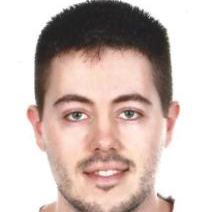Advanced Materials in Additive Manufacturing for Medical Applications
A special issue of Materials (ISSN 1996-1944). This special issue belongs to the section "Manufacturing Processes and Systems".
Deadline for manuscript submissions: closed (31 May 2021) | Viewed by 12576
Special Issue Editors
Interests: aliphatic polyesters; blends; compatibilization; advanced characterization; functional additives; unsaturated polyester resins; composites
Special Issues, Collections and Topics in MDPI journals
Interests: polymer manufacturing; 3D printing; polyesters; medical applications; process modeling; computer-aided engineering (CAE); computer-aided manufacturing (CAM); polymer stents; fixation plates
Special Issues, Collections and Topics in MDPI journals
Interests: mechanical design; biomedical engineering; mechanical engineering; biomechanical engineering; CAD; machine tools; manufacturing engineering; manufacturing systems; machining; manufacturing process mechanics; mechanical processes; additive manufacturing; industrial engineering; artificial neural networks
Special Issues, Collections and Topics in MDPI journals
Interests: polyurethanes; valorization of biomass-derived products; biobased polymers; (nano)composites; nanocrystals from polysaccharides; advanced processing technologies; functional polymers; smart materials
Special Issues, Collections and Topics in MDPI journals
Interests: polymer processing; biobased and biodegradable polymers; wood plastic composites; mechanical and thermal characterization; biodegradation; green composites; advanced characterization; functional additives
Special Issues, Collections and Topics in MDPI journals
Special Issue Information
Dear Colleagues,
Additive manufacturing (AM) has found one of its most innovative and versatile applications in the field of healthcare. The application of AM in medical applications is bursting, and these emerging technologies innovations will define the healthcare of the future. AM technologies are currently not only used to manufacture prototypes for training, simulation, and presurgical planning of complex surgical procedures, but also to produce customized prosthetics and medical tools. However, these applications are only the first step, and materials and manufacturing processes for 3D printing for medical applications are in a continuous, complex state of evolution due to the material–process–property–functionality relationship.
This Special Issue seeks to present original articles, review articles, and state-of-the-art research papers that focus on:
- Research, development, and standardization of materials suitable for medical additive manufacturing;
- Frontier technological and progress research of medical additive manufacturing;
- Research on clinical translation and application of medical additive manufacturing.
We kindly invite you to submit a manuscript(s) for this Special Issue. Full papers, communications, and reviews are all welcome.
Prof. Dr. Rafael Antonio Balart Gimeno
Dr. Teodomiro Boronat Vitoria
Prof. Dr. Joaquim De Ciurana Gay
Prof. Dr. Arantxa Eceiza Mendiguren
Dr. Luís Jesús Quiles-Carrillo
Guest Editors
Manuscript Submission Information
Manuscripts should be submitted online at www.mdpi.com by registering and logging in to this website. Once you are registered, click here to go to the submission form. Manuscripts can be submitted until the deadline. All submissions that pass pre-check are peer-reviewed. Accepted papers will be published continuously in the journal (as soon as accepted) and will be listed together on the special issue website. Research articles, review articles as well as short communications are invited. For planned papers, a title and short abstract (about 100 words) can be sent to the Editorial Office for announcement on this website.
Submitted manuscripts should not have been published previously, nor be under consideration for publication elsewhere (except conference proceedings papers). All manuscripts are thoroughly refereed through a single-blind peer-review process. A guide for authors and other relevant information for submission of manuscripts is available on the Instructions for Authors page. Materials is an international peer-reviewed open access semimonthly journal published by MDPI.
Please visit the Instructions for Authors page before submitting a manuscript. The Article Processing Charge (APC) for publication in this open access journal is 2600 CHF (Swiss Francs). Submitted papers should be well formatted and use good English. Authors may use MDPI's English editing service prior to publication or during author revisions.
Keywords
- Additive manufacturing technologies
- Biocompatible materials
- Medical implants
- Customized prosthetics
- Resorbable polymers
- Biocompatible organic and inorganic additives
- Controlled drug release
- Advanced characterization
- Hydrogels, polyesters, polyurethanes, polydioxanone, and other polymers in medicine
- Bioprinting
- Electrospinning
- Scaffolds, stents, tissue engineering, fixation plates, screws, bone implants, and so on
- Protein-based polymers
- Surface modification, wettability
- Computer modeling
- Biocompatibility studies










